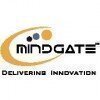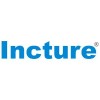
i
Mindteck
Filter interviews by
Mindteck Interview Questions and Answers for Experienced
8 Interview questions
Our organization uses a comprehensive framework that includes multiple technologies and tools for software development.
Our framework includes front-end technologies like React and Angular for building user interfaces.
For back-end development, we use Node.js and Spring Boot to create robust server-side applications.
We also utilize databases such as MySQL and MongoDB for data storage and retrieval.
Continuous integra...
Inheritance is a way to create a new class from an existing class. Polymorphism allows objects of different classes to be treated as if they were of the same class.
Inheritance allows a subclass to inherit properties and methods from a superclass.
Polymorphism allows objects of different classes to be treated as if they were of the same class.
Example of inheritance: class Car extends Vehicle. Car inherits properties...
Program to merge two arrays of strings.
Create a new array with size equal to sum of sizes of both arrays.
Copy elements of first array to new array.
Copy elements of second array to new array starting from the end of first array.
Return the new array.
Constructor is a special method used to initialize objects. There are default, parameterized and copy constructors.
Default constructor is used to create an object with default values.
Parameterized constructor is used to create an object with user-defined values.
Copy constructor is used to create a new object as a copy of an existing object.
Constructors can be overloaded to have multiple constructors with different...
Dependency injection is a design pattern used to remove hard-coded dependencies and make code more modular and testable.
Dependency injection is achieved by passing dependencies to a class or method through its constructor or method parameters.
Advantages include increased modularity, easier testing, and reduced coupling between components.
Examples of dependency injection frameworks include Spring and Guice for Java...
View is a virtual table that displays data from one or more tables. SP optimization can be done by reducing the number of joins and using proper indexing.
View is a read-only table that is created by a query
It can be used to simplify complex queries
SP optimization can be done by reducing the number of joins
Using proper indexing can also improve performance
SOLID principles are design principles for software development. Liskov principle ensures substitutability of objects.
SOLID principles are a set of five design principles that help in creating maintainable and scalable software.
Liskov principle, named after Barbara Liskov, states that objects of a superclass should be replaceable with objects of its subclasses without affecting the correctness of the program.
It en...
Typecasting is converting one data type to another. Downcasting is casting a superclass to a subclass.
Typecasting is done using (datatype) variable syntax.
Downcasting requires explicit casting using subclass type.
Typecasting can result in loss of data or precision.
Downcasting can result in ClassCastException if the object is not an instance of the subclass.
Mindteck Interview Experiences for Experienced
14 interviews found
I applied via LinkedIn and was interviewed in Oct 2023. There was 1 interview round.
(1 Question)
- Q1. I have given interview and it went very well. Normally we get result in 2 business days for every company. But it's more than 1 month. I still have not got result. Whenever I call HR for result she just ig...
Interview Preparation Tips
I applied via Recruitment Consulltant and was interviewed in Jan 2023. There were 4 interview rounds.

Few simple questions and they will choose any unworthy candidates and then at a later date choose to fire them, realy sad to say.
Two pundits will join you, both of whom have no understanding of their own statements and believe that the methods they employ are the only correct approach to solving a specific problem.
(2 Questions)
- Q1. Why you want to leave your current company?
- Q2. What is your expected salary?
Interview Preparation Tips

Sinple algo question.
(1 Question)
- Q1. Tell me about yourself. 1 multithreading question
I appeared for an interview before Apr 2024, where I was asked the following questions.
- Q1. About your self Job roles and responsibilities Every thing related to your CV including technical and non technical questions
- Q2. What are the challenges
- Ans.
Challenges in recruitment include talent scarcity, high competition, and evolving candidate expectations.
Talent Scarcity: Finding qualified candidates in niche markets can be difficult. For example, tech roles often have a limited talent pool.
High Competition: Competing with other companies for top talent can lead to longer hiring times and increased salaries.
Evolving Candidate Expectations: Candidates now seek more th...
I applied via Naukri.com and was interviewed before Jun 2023. There were 4 interview rounds.
(2 Questions)
- Q1. Basic programming questions
- Q2. Testing questions
(1 Question)
- Q1. Testing process
(1 Question)
- Q1. Manager round questions . Current work process
(1 Question)
- Q1. Salary discussion
I applied via Referral and was interviewed before Oct 2022. There were 3 interview rounds.

(1 Question)
- Q1. Storage questions
(1 Question)
- Q1. Virtualization questions
I applied via Approached by Company and was interviewed before Jun 2023. There was 1 interview round.
(2 Questions)
- Q1. Explain Complete Framework used in your organisation
- Ans.
Our organization uses a comprehensive framework that includes multiple technologies and tools for software development.
Our framework includes front-end technologies like React and Angular for building user interfaces.
For back-end development, we use Node.js and Spring Boot to create robust server-side applications.
We also utilize databases such as MySQL and MongoDB for data storage and retrieval.
Continuous integration ...
- Q2. Programm for reverse string,Complete core java concept with implementation in framework
I applied via Recruitment Consulltant and was interviewed in Nov 2021. There were 3 interview rounds.
(2 Questions)
- Q1. What is solid principle and describe the use Liskov principles
- Ans.
SOLID principles are design principles for software development. Liskov principle ensures substitutability of objects.
SOLID principles are a set of five design principles that help in creating maintainable and scalable software.
Liskov principle, named after Barbara Liskov, states that objects of a superclass should be replaceable with objects of its subclasses without affecting the correctness of the program.
It ensures...
- Q2. What is view? How to optimize SP?
- Ans.
View is a virtual table that displays data from one or more tables. SP optimization can be done by reducing the number of joins and using proper indexing.
View is a read-only table that is created by a query
It can be used to simplify complex queries
SP optimization can be done by reducing the number of joins
Using proper indexing can also improve performance
(1 Question)
- Q1. How do you use dependecy injection? What are advantages?
- Ans.
Dependency injection is a design pattern used to remove hard-coded dependencies and make code more modular and testable.
Dependency injection is achieved by passing dependencies to a class or method through its constructor or method parameters.
Advantages include increased modularity, easier testing, and reduced coupling between components.
Examples of dependency injection frameworks include Spring and Guice for Java, and...
(2 Questions)
- Q1. Why do you want to change?
- Q2. What is your next goal?
Interview Preparation Tips
Skills evaluated in this interview
I applied via Naukri.com and was interviewed in Dec 2021. There were 3 interview rounds.
Interview Questionnaire
1 Question
- Q1. Questions were purely based on your skills set and the profile you have mentioned in the resume..
Interview Preparation Tips
I applied via Approached by Company and was interviewed before Oct 2021. There were 4 interview rounds.

(1 Question)
- Q1. Basics of OOP,.Net mvc, SQL, JavaScript
(1 Question)
- Q1. Entity framework, Design Pattern,
(1 Question)
- Q1. Previous job role, salary negotiation
Interview Preparation Tips
Then you can crack the interview
Top trending discussions






Mindteck Interview FAQs
The duration of Mindteck interview process can vary, but typically it takes about less than 2 weeks to complete.
Tell us how to improve this page.
Mindteck Interviews By Designations
- Mindteck Software Engineer Interview Questions
- Mindteck Senior Software Engineer Interview Questions
- Mindteck Senior Test Engineer Interview Questions
- Mindteck Module Lead Interview Questions
- Mindteck Senior Engineer Interview Questions
- Mindteck Quality Engineer Interview Questions
- Mindteck Test Engineer Interview Questions
- Mindteck Web Developer Interview Questions
- Show more
Interview Questions for Popular Designations
- Software Engineer Interview Questions
- Intern Interview Questions
- Sales Executive Interview Questions
- Senior Engineer Interview Questions
- Associate Software Engineer Interview Questions
- Graduate Engineer Trainee (Get) Interview Questions
- Java Developer Interview Questions
- System Engineer Interview Questions
- Show more
Overall Interview Experience Rating
based on 7 interview experiences
Difficulty level
Duration
Interview Questions from Similar Companies
Mindteck Reviews and Ratings
based on 264 reviews
Rating in categories
|
Senior Software Engineer
231
salaries
| ₹9.2 L/yr - ₹17 L/yr |
|
Software Engineer
223
salaries
| ₹4.3 L/yr - ₹10 L/yr |
|
Module Lead
138
salaries
| ₹10.9 L/yr - ₹19 L/yr |
|
Senior Technical Lead
69
salaries
| ₹22 L/yr - ₹30.3 L/yr |
|
Technical Lead
56
salaries
| ₹13.3 L/yr - ₹23.5 L/yr |

Softenger

Capital Numbers Infotech

JK Tech

DesignTech Systems
- Home >
- Interviews >
- Mindteck Interview Questions >
- Mindteck Interview Questions for Experienced












